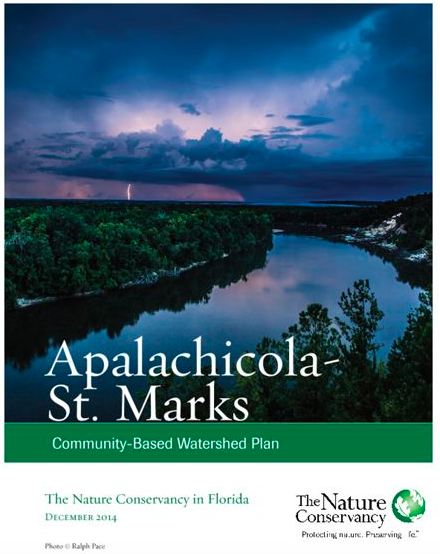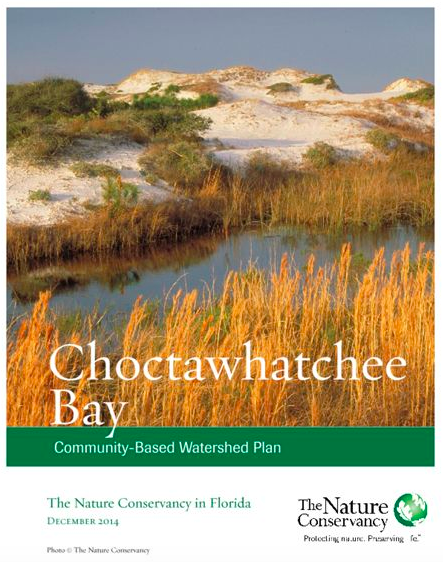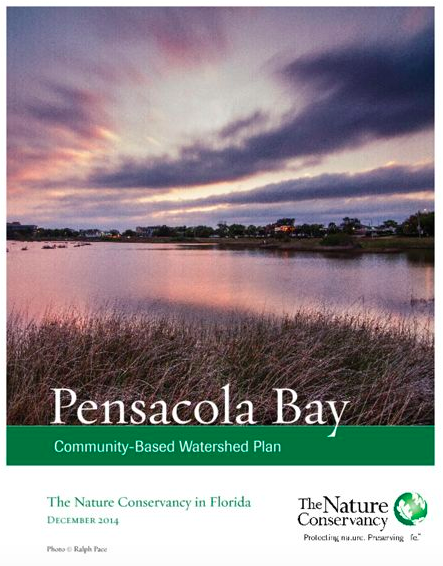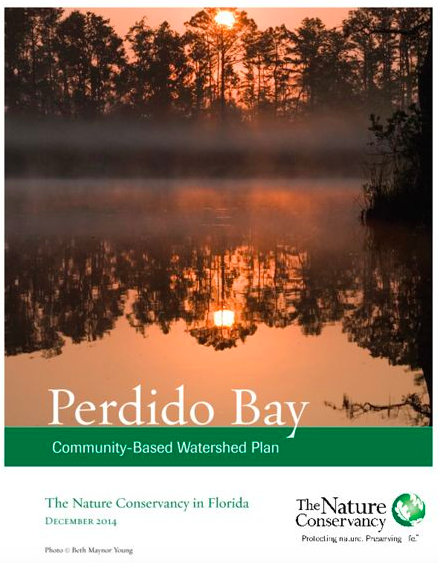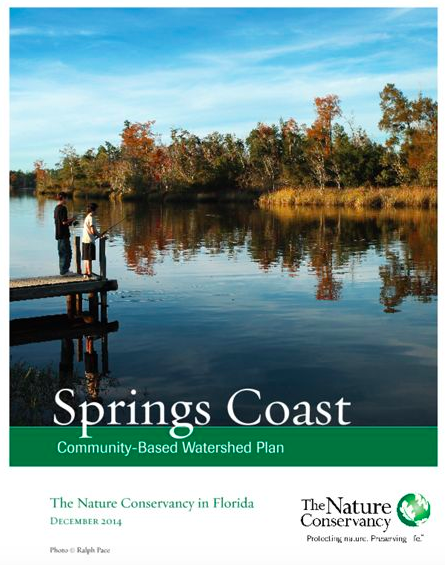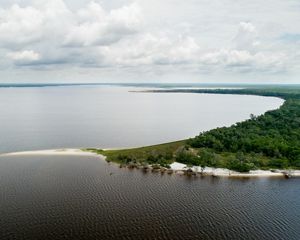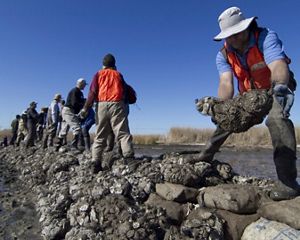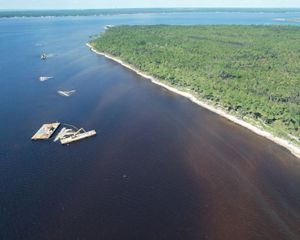
Panhandle Estuary Programs
TNC and our partners are working to ensure a healthy future for our estuaries, watersheds and Gulf.
St. Andrew and St. Joseph Bays Estuary Program Partnership
The Nature Conservancy is partnering with Florida State University Panama City and Bay County to establish a new estuary program for St. Andrew and St. Joseph Bays in the Florida Panhandle. Modeled after the Environmental Protection Agency’s National Estuary Program, the plan for the new estuaries aligns conservation with economic priorities to improve the bays. The plan will be informed by scientific research and involves stakeholders from a broad range of engaged groups. St. Andrew Bay, a 69,000-acre estuary, is one of the most biologically diverse bays in North America. St. Joseph Bay has the richest and most abundant concentrations of marine grasses along the Northwest Florida coast.
Our Estuaries
Estuaries, areas along the coast where freshwater meets ocean waters, are among the most diverse and productive natural areas on Earth. In Florida, these bodies of water are essential to the coastal lifestyle, economic well-being of local communities and the health of the environment. They nurture marine life, protect homes from flooding and provide places to boat, swim and fish. Estuaries, including nearshore waters, like bays and lagoons, are dynamic systems and are home to unique plants and animals, producing food sources and nutrients that support the health of our marine environment, our fisheries and our economy. More than 70% of Florida's recreationally and commercially important fishes, crustaceans and shellfish spend part of their lives in estuaries.
Decades of degradation, compounded by the impacts of the Deepwater Horizon oil spill in 2010, have resulted in an array of problems for Florida’s estuaries that include declining fisheries and water quality, eroding shorelines, sea-level rise and the impacts these have on the economies and well-being of our coastal communities.
Communities for Water
A watershed is the land area that drains rainwater into a river, lake or wetland, eventually finding its way to an estuary, bay or ocean. To protect the health of Florida’s estuaries, a community-wide effort is needed to preserve and manage the lands and waters within its watershed.
TNC brought together stakeholders from local, state and federal governments, nonprofit organizations, community groups and citizens in planning processes to protect watersheds across Florida’s Panhandle. This collaborative, science-based process resulted in Community-Based Watershed Plans that identified the most pressing environmental issues affecting each watershed and began to prioritize solutions.
Planning for Healthy Estuaries
The Community-Based Watershed Plans provided the foundation to create three new Estuary Programs, based on the highly successful US Environmental Protection Agency (EPA) National Estuary Program model.
With an Estuary Program established, the communities will continue to identify issues affecting their region and agree on goals and objectives to address those issues. The result of this stakeholder-driven, science-based approach will result in long-term plans called Comprehensive Conservation and Management Plans (CCMPs) that prioritize solutions and projects with the greatest conservation return on investment for the community.
Three regions benefited almost immediately from their participation in the estuary planning process with TNC and were ready to answer the EPA's call for proposals when the agency decided to use funding allocated by the Deepwater Horizon RESTORE Gulf Restoration Council to support one new estuary program in Florida’s Panhandle.

A Turning Point
The Pensacola and Perdido Bays Estuary Program was the first success story of the EPA’s Panhandle initiative. In 2018, the EPA awarded a $2 million grant to establish this initial Panhandle estuary program. The decision was a milestone for the EPA, the RESTORE Council, and the Panhandle and the funding for this local estuary program is a significant contribution to estuary conservation. TNC has been a partner in this watershed for several decades, taking part in land protection and management, river management, and is actively working on estuary restoration.
As part of the Pensacola and Perdido Bays Estuary Program, TNC is leading the work to combine the needs of both the wild oyster fishery and aquaculture with the need to conserve the benefits provided by natural oyster habitat. Oyster reefs are natural breakwaters, protecting the coast. Their filter feeding improves water quality and clarity. The young of many different species find shelter within the maze of shells. TNC is partnering with oyster and estuary management agencies and community members throughout the Pensacola Bay System to create an oyster plan that works for all.
Learn more about the oyster plan and our other work in the Pensacola Bay System.
Determination and New Beginnings
The two other Panhandle regions that applied for, but didn’t receive the EPA estuary program funding did not give up on their plans to protect and maintain the health of their estuaries, bays, and rivers. They were energized by the Community-Based Watershed Plan process and fueled by the RESTORE Council’s decision to fund the Pensacola and Perdido Bays Estuary Program. TNC, inspired by the steadfast commitment of the communities, provided important funding these communities needed to launch their own estuary programs.
In June 2019, TNC jump-started the Choctawhatchee Bay Estuary Program in Okaloosa and Walton Counties by funding an executive director position for one year. This allowed the program’s work to begin while Okaloosa County applied for and received $2.25 million in RESTORE Act money to continue the program. Walton County has also committed a portion of their RESTORE funds to support the Choctawhatchee Bay Estuary Program.
In May 2020, TNC helped launch the St. Andrew and St. Joseph Bays Estuary Program by granting $1 million over three years to Bay County. Bay County will contribute approximately $230,000 a year over a 12-year period from their RESTORE Act funds.
Estuaries are a natural resource that supports people's livelihoods through activities such as fishing and tourism, and provide a home for fish and wildlife. Estuary Programs empower communities to plan for a future with clean beaches and water, lush sea grass meadows and abundant oyster reefs that nurture marine life. TNC is honored to partner with these dedicated communities as they create and support a future for the Gulf region.
Read our community-based watershed plans for Florida.
Watershed Plans
Watershed Plans
TNC is hard at work on the ground, in the water, and with local, state and federal governments, universities, environmental organizations, businesses, and individuals to ensure a healthy future for our estuaries, watersheds and Gulf.
